
A trip to Xi’an, an ancient capital for 13 dynasties
Xi’an is regarded as one of the world’s four great ancient capitals together with Rome in Italy, Athens in Greece and Cairo in Egypt.It used to be the capital of 13 dynasties and became a cosmopolitan city with a population of over 1 million more than 1,000 years ago.
Xi’an, as the starting point of the Silk Road, it was an important link between China and other countries in Eurasia.
Today, it is still a household name.
Jia Pingwa, a famous contemporary Chinese author, claimed that by no means could anyone who intended to write about China avoid mentioning the dignified and unique city with a profound history and all-round, authentic traditional Chinese culture.
In this issue, Confucius Institute reporters will take you on a tour of Xi’an to experience the folk customs of the millennium-old city.
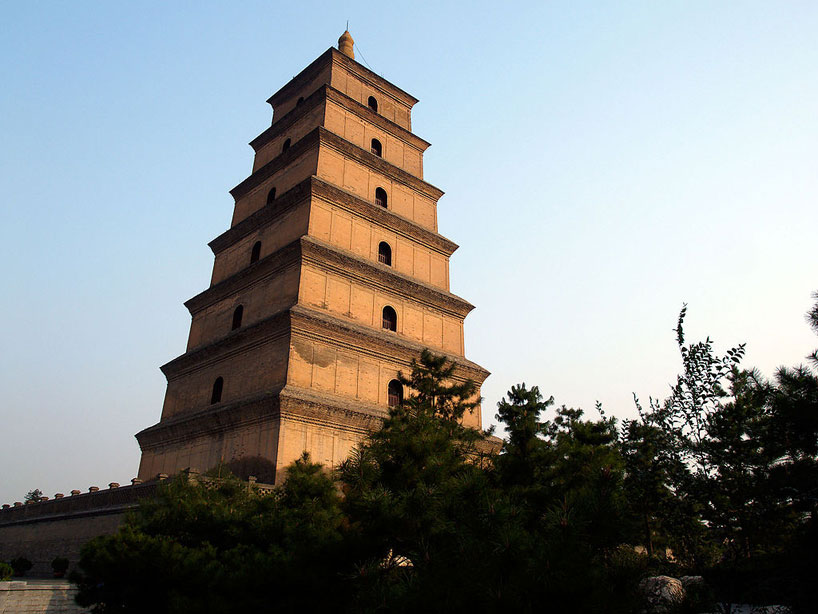
The slight autumn chill has not in any way dampened the enthusiasm of people in Xi’an. Every evening, they will gather at the North Square of Dayan (Big Wild Goose) Pagoda in the southern suburb of the city to appreciate the musical fountain. As the music starts, the sudden eruption of water columns never fail to draw forth the exclamation from the audience, while the pagoda stands still in the background, like a weather-beaten old man sedately resting his eyes on anything that appears before him.
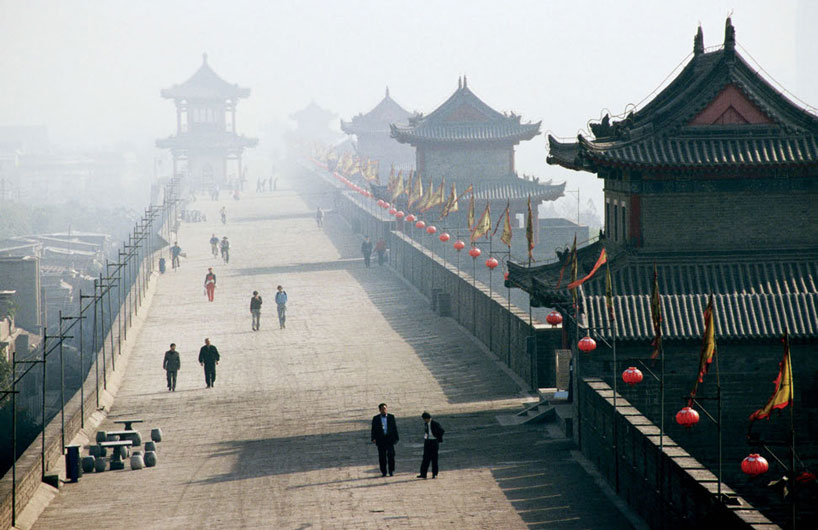
INTEGRATION OF ANCIENT AND MODERN ELEMENTS
Such scenes are quite familiar to Uncle Du who has spent most of his life in Xi’an. Nevertheless, the square is a far cry from the one he saw in his early years. “In the past, the pagoda was surrounded by dilapidated and disorderly bungalows as well as other facilities connected by narrow and rough roads. Nowadays, things are going well. You can find a better preserved pagoda, with an amazingly cleaner environment.
I have a lot of memories of this place where my wife and I took the first wedding photo,” he said.
Like Uncle Du, many local citizens have a special bond with the pagoda. The ordinary-looking brick structure has been recorded by one generation after another. However, some people may not know that it has been standing there for over 1,000 years.
In 627, a Buddhist monk named Xuanzang set out from Chang’an (today’s Xi’an), the capital of Tang Dynasty, and went westward along the Silk Road to search for Buddhist scriptures. He traversed boundless desert and lofty mountains and finally arrived in Tianzhu (present-day India). He returned to Chang’an 19 years later. In 652, he built at Ci’en Temple in the city a five-story brick pagoda, the predecessor of the Big Wild Goose Pagoda, in order to worship the Buddhist relics, statues and texts he brought from Tianzhu.

Due to the attention and support of the imperial court, Ci’en Temple along with the pagoda became the most renowned and magnificent Buddhist monastery in Chang’an, thus attracting numerous men of letters as well as a number of famous monks from Tianzhu, Japan and Silla (one of the former kingdoms on the Korean Peninsula) for sight-seeing or Buddhist studies.
The era of Xuanzang is long past, yet the pagoda stands the test of time and remains an indispensable landmark of the city after repeated renovations. On the southern side of the pagoda you can find a bronze statue of Xuanzang facing south, which resembles a silhouette of the monk who was determined to travel west in the autumn of 627.
A thousand years seems an instant. In Xi’an, we may often get the illusion of time and space. On the top of the city wall where running chariots could once be seen, visitors from all over the world are measuring its length with their bicycles; around the bell tower which was used to signify the time, vehicles are busying to and fro and drawing flowing curves; the shops which were strung out along the roads have been replaced by modern shopping malls long before…
Uncle Du cannot help but be amazed at these changes, “Today’s Xi’an is quite different from my childhood memories. The historic sites are better preserved and the city more developed.”
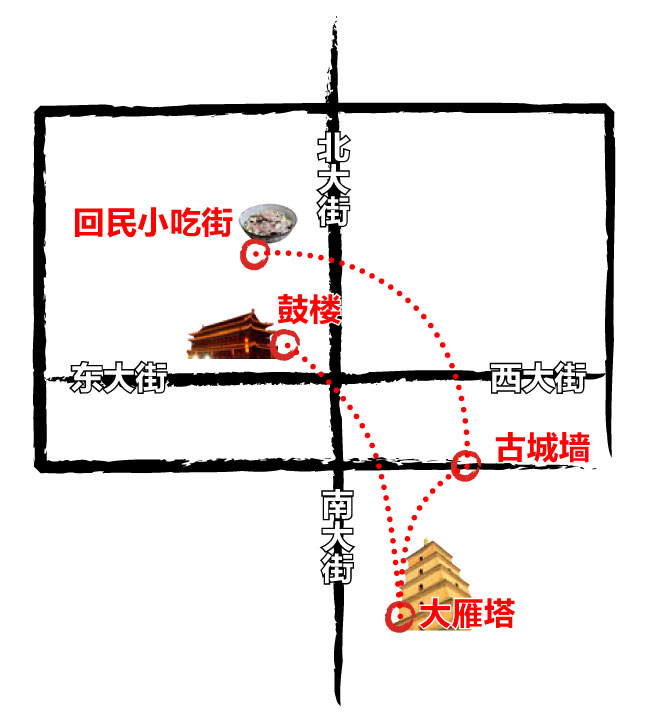
MEMORY OF THE FLOURISHING TANG DYNASTY
Uncle Du clearly remembers the first time he climbed up the pagoda. “It was in the 1960s. As there were hardly any view-blocking things like towering buildings in the city, I could enjoy a panoramic view of this square-shaped historic quarter and the magnificent livid wall, which shows the city’s imperial atmosphere. Nowadays, it is not that easy to have an overview up on the pagoda given a host of high buildings,” said Uncle Du.
The historic quarter mentioned by Uncle Du is located at 4 km north of the pagoda. An area of about 12 sq km has been encompassed by the strong fortifications erected in early Ming Dynasty (the 14th century) around the imperial city of Chang’an in the Tang Dynasty (618-907). The wall measures 12m in height, 18m in width at the bottom, and 15m in width at the top. On each of its four corners lies a turret, and the wall is surrounded by a moat.
The status of Xi’an as an imperial capital can be traced back to the Western Zhou Dynasty in the 11th century BC. In the coming years, 13 dynasties followed suit including Qin, Han, Sui and Tang, the latter being the most prosperous.
In the Tang Dynasty, the city was named Chang’an, which literally meant “perpetual peace.” Located in the fertile Guanzhong Plain in Central China, the ancient city which enjoyed equal fame with Rome was one of the origins of Chinese civilization, in view of its superior location, developed economy and unsophisticated residents. As the starting point of the Silk Road, it constellated the culture, customs and religions of the oriental and occidental world, and became one of the world’s greatest metropolises with an endless flow of merchants from Persia (today known as Iran) and other countries in Central Asia.
The city of Chang’an was rectangular in form, with its longer sides extending from north to south and the shorter sides running east to west. It was comprised of the palace, the imperial city and the outer city. The imperial palace as the residence of the emperors was located in the center of the northern city; the imperial city as the seat of officials and central government lied to the south of the palace; centered round the palace and the imperial city, the outer city where the common people lived and conducted business extended to the east, west and south. Today, the historic quarter of Xi’an shares the same location as the imperial city, yet it takes up only one-seventh of the total area of Chang’an.
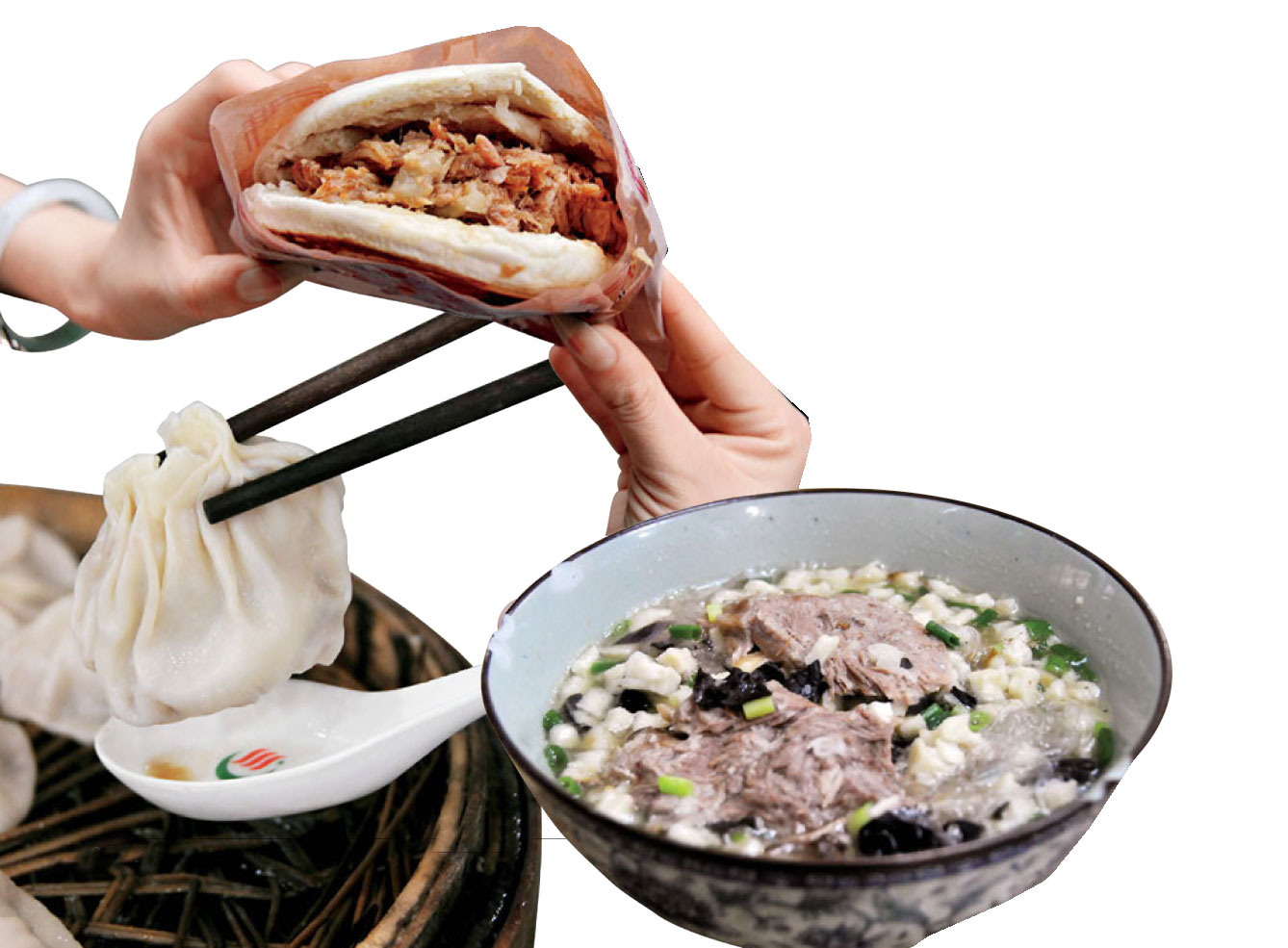
“TASTE” OF HISTORIC QUARTER
Previously Uncle Du and his family lived in the historic quarter. Every morning, he would take a walk around the city wall and chat with his neighbors. “Living in the historic quarter made me feel at ease,” said Uncle Du. These strong fortifications seemed to have brought history right in front of our eyes.
Against the backdrop of rapid economic development in recent decades, the ancient city has been gradually overburdened by the large-scale urban construction. The excessive population density and architectural disorder have brought regrets to many visitors attracted by the fame of Xi’an. In 2005, in order to better preserve the ancient city, the Xi’an city government put forward an imperial city renovation proposal. According to the proposal, the government organs were to be relocated from the historic quarter, coupled with a lessened population, a reduced height and density of buildings and a better environment.
In this case, Uncle Du moved out of the historic quarter in 2007. Despite an attachment to his old residence, Uncle Du found it necessary to leave. “The historic quarter is hounded by excessive population and poor living conditions,” he said. His departure has not only earned him a better accommodation, but also contributed to the preservation of the historic quarter.
If he misses the “taste” of the historic quarter, Uncle Du will come back and order a bowl of boiling yang rou pao mo (mutton soup with bread) at a restaurant along the road. Mutton soup with bread is a famous snack of Xi’an. The cook tends to pull apart the pita bread and then pour the cream soup and stewed mutton on it. It is said that the unique snack has been in existence for 2,000 years. At first, it was prepared exclusively for the emperors. In the prosperous Tang Dynasty, an increasing number of merchants came to Xi’an from Northwest China, which not only promoted local livestock trade, but also elevated the traditional delicacy to a popular snack of various ethnic groups.
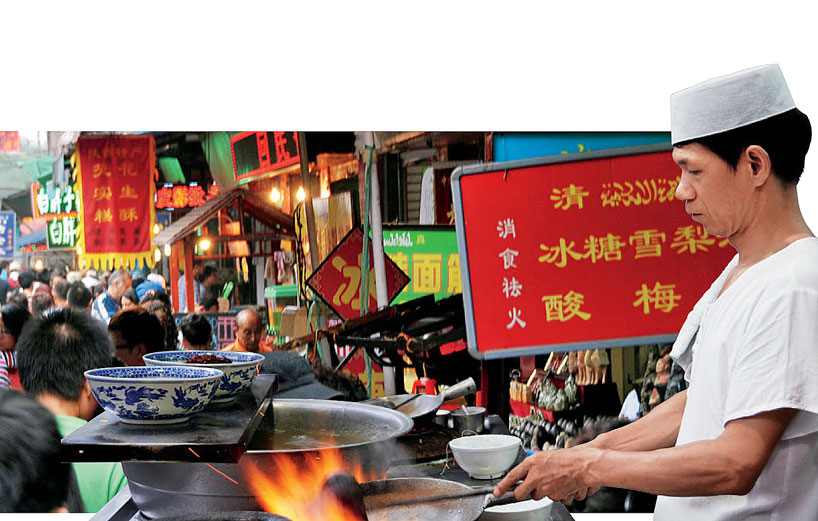
In addition to mutton soup with bread, guan tang bao (soup dumplings) and rou jia mo (Chinese hamburgers) are among the favorites of local citizens. The soup dumplings of Xi’an feature thin dough skin and rich juice that will flow into your mouth with a single bite, and the oven-baked bread and braised mince of Chinese hamburgers boast such a delicious smell that makes our mouths water. These familiar tastes of the historic quarter are the best memories of Uncle Du. “The best snacks of Xi’an can only be found in the historic quarter,” he said. A mouthful can bring you great satisfaction.
Every day, the historic quarter will see countless visitors from all over the world. Some of them stand under the pagoda and cherish the memory of the Tang Dynasty; some walk slowly on the city wall and immerse themselves in meditation; some loiter along the ancient alleys and experience the folk customs; some linger around the snack streets and enjoy the taste of Xi’an. Not only does the city have a glorious past, but it is also the cultural ties and bonanza and the dream capital of the Chinese nation.
 Published in Confucius Institute Magazine
Published in Confucius Institute MagazineNumber 23 Volume VI. November 2012.
View the PDF print edition























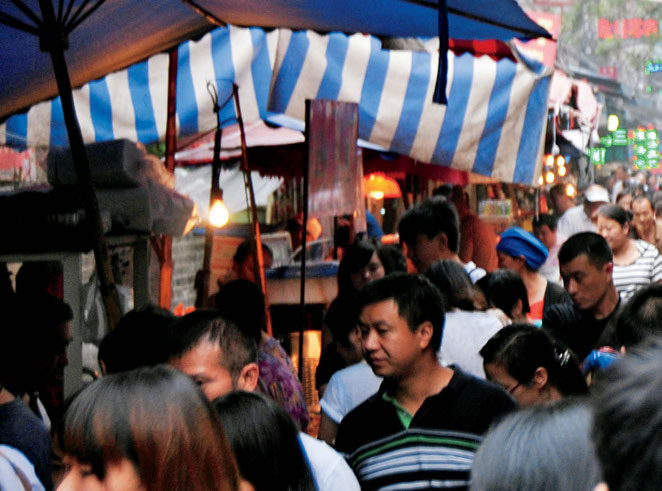


No hay comentarios:
Publicar un comentario